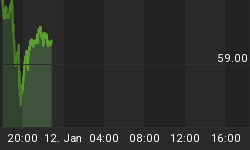We are currently in Stage 5 of the Business Cycle.
Economists use numerous regularly released surveys, statistics and reports to try and predict the future direction of the economy. But if you wish to use phases of the economy to help guide your investment strategy, perhaps the most reliable and most available parameters are the financial markets themselves. Asset prices tend to incorporate the markets best guess of future events and anticipate movements in the economy. Stock prices tend to lead an economic recession by about six months, and an economic expansion by about four months. The business cycle is not and exact science and is best used as a confirmation to what you see in price. For example if we are in stage one and high yield bonds and financials are trending up you might want to participate in those sectors. Or if we are in stage five and stocks are bullish, which is contrary to what the business cycle anticipates, it might be wise not to use leverage. Please visit this link for a full explanation of the business cycle and it various stages.
Below is a snap shot of the most recent business cycle. Bonds have broken out of their trading range but as you can see the Fed Funds rate (light blue) is still relatively low. Also note that the bull run of the 1990s took place with a Fed Funds rate, and bond yields higher then current levels. The rate is now slightly higher then it was in 1992.
![]()


Stage 5 is a period in which the Fed raises interest rates in an attempt to slow business activity and curb inflation. This, in turn, causes bond yields to increase.
Interest rates have been rising in the United States since 2004 and they recently began heading higher in Europe as well. The US Federal Reserve raised interest rates for the 15th time in a row at the end of March, 2006. Borrowing costs rose a quarter of a percentage point to 4.75%. Rates have increased from 1% over the past 19 months and are now at their highest level since April 2001. The European Central Bank (ECB) also raised interest rates by a quarter of a percentage point to 2.5% - the second change in rates in four months. In a historic policy change, the Bank of Japan (BOJ) on 3/9/2006 scrapped its five-year-old super-loose monetary policy and returned to a more conventional regime, but said it would still keep short-term interest rates around zero for some time. Japan is the second biggest economy in the world, and their move to a tightening policy will pressure our bond yields higher, as seen last week.
The Semiconductor Cycle is usually a good proxy for the general markets trend relative to the business cycle. When the Index and its 50-day moving average cross the 200-day moving average, a change in trend is usually confirmed.

The interest-sensitive Dow Utility Average tends to lead trend changes in the broader averages. It has recently breached its 200-day moving average for the first time since April, 2004.

During Stage 5, stocks top out and begin the early phase of their bear market in anticipation of declining earnings. The bearish influence of falling bond prices (higher yields) pulls interest sensitive stocks downward. Eventually, the rest of the stock market will also begin to weaken. This downturn in the stock averages will often be accompanied with an upturn in certain tangible asset stock groups, such as energy and gold mining shares. Energy stocks usually lead the stock market near the end of an economic expansion, which is usually associated with rising oil prices. A spike in oil has preceded virtually every recession over the past 30 years. The below charts illustrate the uptrend in both stock and commodities.



The Fed target interest rate is highly correlated with the CRB, and commodity prices have a greater than 90% correlation with three important inflation measures (PPI, CPI, GNP deflator). Commodities during Stage 5 continue to enjoy increased valuation, as there is some considerable time lag between changes in interest rates and its affects on business activity. Rising interest rates also pull the dollar higher.
I am not a big fan of making market predictions. CET Capitals beliefs are focused around price trends and momentum strength. As of lately the markets have been moving up on strong volume and are moving in a contrary direction to what the business cycle is suggesting should happen. Based on where we are in the business cycle I would not recommend using leverage currently.















